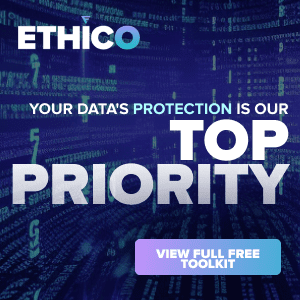A Management Imperative
Change is not only inevitable, for businesses, it’s mandatory. “Adapt or perish,” as H.G. Wells wrote. And the early adopters, those quickest to adapt, are most likely to survive. But recognizing a sea change early isn’t always easy. It’s incumbent on the executive leadership team and board of directors to understand and address risks as they emerge.
In a global survey[1] involving over 700 board members and executives across multiple industries, one of the top 10 risks cited was that resistance to change may restrict an entity’s ability to make necessary adjustments to its business model and core operations.
This finding is important for many reasons. Change is inevitable and necessary, because if organizations fail to improve their products, services, processes and capabilities continuously, they ultimately encounter serious performance gaps relative to more adaptive competitors. Change includes both opportunities to enhance as well as threats to impair enterprise value. It can be disruptive in challenging the fundamental assumptions underlying a company’s strategy and business model. Therefore, organizations, whether public, private or not-for-profit, must expect and embrace change. In this era of continuous and disruptive change, early movers are the ones most likely to survive and prosper as others wither and fade away.
Below we discuss the what, why, when and how underlying facing change with confidence.
Identifying Incremental Change
Probably the most important aspect of the change process is correctly diagnosing the opportunity or issue precipitating the need for change. Most managers, if they know what the real opportunity or issue is, believe they can allocate the appropriate resources to address it.
Change comes in small and large dosages. Small dosages usually result in incremental improvements in business processes. When operational and financial results fall short of expectations set by management’s objectives and quality, time, cost and innovation performance goals, focused efforts are undertaken to eliminate non-value-added activities and enhance suboptimal processes. By contrast, large dosages arise from disruptive change, which is discussed in the next section.
Incremental change may address new requirements arising from changes in laws and regulations, contracts and internal policies. Alternatively, it may focus on improving customer and employee satisfaction levels as well as innovation performance or on improving risk management capabilities. Whatever the drivers of incremental change, the continuous improvement discipline is never-ending, as internal and external factors constantly raise the bar for processes to scale to achieve business objectives.
In addressing change, it is important to look beyond symptoms and focus on root causes. A root cause is a condition or a sequence of events that can, or is likely to, lead to process underperformance or an undesired consequence or outcome. Root causes can point to opportunities (e.g., a new law or regulation; an emerging technology that is gaining acceptance in the marketplace; or a specific opportunity to improve products, services and the customer experience in response to market feedback). They can also point to issues such as poorly written policies, a process or system failure or inadequate training.
Root cause analysis is a technique directed to systems and processes (but not to people) to source fundamental causal factor(s) underlying an unacceptable variation in performance that, if reduced to an acceptable level, would improve the system or process. Once the correct opportunity or issue is fully understood and defined, management’s evaluation team gathers and evaluates relevant data, identifies and systematically reduces the possible underlying causes to the most likely few, considers the potential for multiple interrelated causes and formulates corrective actions to eliminate the relevant root causes at the source. Actual results are then monitored over time and the technique is applied again until acceptable results are achieved.
Identifying Disruptive Change
Breakthrough improvements are often disruptive. Today, managers face disruptive change to business models and even entire industries. Whereas disruptive innovations may have once taken a decade or more to transform an industry, research shows that the elapsed time frame has compressed. More importantly, it continues to shrink, leaving very little time for reaction. Sustaining a business model in the face of digitally enabled competition requires constant innovation to stay ahead of the change curve.[2]
There are powerful forces reshaping our world, pushing leaders to rethink the assumptions underlying decisions relating to consumption, resources, labor, capital, competition and other matters. For example, one group of authors asserts there are four great disruptive global forces that, collectively, are formulating a radically different world:[3]
- The shifting locus of economic activity to emerging markets and cities within those markets – Nearly half of global GDP growth between 2010 and 2025 will come from 440 cities in emerging markets – 95 percent of them small and medium-sized cities many people may never have heard of.[4]
- Acceleration in scope, scale and economic impact of technology – Always a significant force in overturning the status quo, the growth in processing power and connectivity through digital technology has been exponential. Many organizations are undergoing major technology transformations, accelerating cloud computing adoption, increasing digitization investment and expanding mobile device usage. Also, there is the concurrent data revolution, in which data and analytics sophistication is advancing. This revolution is delivering unprecedented amounts of information to consumers and businesses in increasingly convenient ways, spawning new ways of analyzing data, doing business and fulfilling customers.
- Changing demographics – The human race is aging as fertility falls. In 2013, approximately 60 percent of the world’s population lived in countries with fertility rates below those needed to replace each generation.[5] The consequence of this trend is staggering, if left unabated.
- The increasing degree to which the world is becoming more connected through trade and movements in capital, people and information flows – This connectedness matters because it is changing the competitive landscape, requiring established incumbents to prepare for entrants from anywhere, build new global ecosystems and become more agile in an increasingly interconnected world.
The reality is clear: To stay ahead of the disruption curve, business leaders must quickly discern the vital signs of change and the related implications to their business model. To do that, they must do four things well.
First, they must understand the critical assumptions underlying the strategy and business model. Second, they must take a contrarian view by evaluating plausible and extreme events or combinations of events that could invalidate one or more critical assumptions. Third, using the aforementioned insight, business leaders must identify the vital signs that would indicate whether the critical assumptions have become or are becoming invalid and direct the intelligence gathering activities of the organization to monitor them. Finally, information about assumptions, scenario analyses and intelligence gathering must be distilled on a timely basis and insights obtained must be reported to decision-makers.
Executives and directors can expect the implications of transformative market trends to established business models to be highly disruptive. Today’s world is undergoing a sea change that will redefine the dominant players in the global economy. In this environment of constant change, the status quo has no future and is constantly “on the clock.”
A current example is the rise of nationalism, resulting in the U.K. Brexit referendum and the U.S. presidential election in 2016. While the impact of this development on the geopolitical and business environment is not fully evident at this time, it could be profound. Executives and directors need confidence that they have the insights needed to recognize in a timely manner the effects and implications of this and other profound changes unfolding before them. For example, management can formulate appropriate scenarios, taking into account the impact of the new administration’s trade, regulatory, tax reform, immigration and other policy initiatives on the company’s markets, channels, customers, employees, supply chains, cost structure and business model. These scenarios can be used to help the executive team and board of directors understand the potential impact on the business and formulate strategic alternatives to capitalize on market opportunities and address emerging risks. As the Trump administration’s policies are clarified through the first 100 to 200 days, the analysis can be updated. Such analysis enables management to better anticipate forthcoming events.
Acting on Change
Time to act is a precious asset in a rapidly changing environment. It arises only when there is timely recognition of performance issues, market opportunities and emerging risks, as well as an understanding of their implications to the enterprise’s processes and business model. “Time to act” means that root causes of subpar performance and the implications of emerging trends may be evaluated in the cool of the day rather than under duress; therefore, options to act can be formulated for decision-makers with confidence.
Unfortunately, time to act can be squandered. Having knowledge of poor performance or an emerging opportunity or risk without converting that knowledge into hard choices and actionable plans to innovate processes and offerings is as useless as having no knowledge at all. To ensure timely reaction, management must:
- Foster an organizational culture that facilitates sourcing of root causes of subpar performance and consideration of the impact of changing market realities on critical business model assumptions – Managing by fact and empowering process owners and stakeholders can drive continuous improvement of business processes when subpar performance and/or trending metrics signal the vital signs. With respect to changes in the marketplace, continuous dialogue among business areas, alignment of incentive compensation with short- and long-term performance goals, senior management involvement and an active board help shape the desired culture of understanding and addressing implications of change.
- Incent managers to translate root cause analysis and altered assumptions into actionable revisions to strategic, business and product plans, as well as process improvements – Incentives that are skewed to maximize revenues and cut costs without fostering sensitivity to changing market realities and the need to innovate can create serious organizational blind spots.
- Seek organizational resiliency – Insulation from reality in a rapidly changing world is lethal. When companies don’t respond to disruptive change, it’s usually because they either don’t have a single version of the truth or are bound by the confines of short-termism. Such dysfunction can arise from incentives that do not encourage resiliency and from management being out of touch with the customer and uncommitted to applying contrarian analysis to strategic assumptions and managing by fact.
In summary, facing change with confidence means accelerating the decision-making process regarding actions to address recognized performance issues, market opportunities and emerging risks. Disruptive change is a double-edged sword, simultaneously presenting one of the biggest opportunities and greatest risks a company can face. What separates winners from losers in managing disruptive change is the ability to recognize the vital signs and act on them with confidence.
Managing the Change Process
The improvement of products, services and processes and implementation of new strategic initiatives require focused and disciplined implementation aligned with the organization’s structure, culture and operating philosophy. To enable continuous or breakthrough change with confidence, buy-in must be obtained from executive management, starting with a committed CEO and executive management who demonstrate unwavering support for undertaking action plans that create and sustain momentum for change.
With executive management’s assistance, the change implementation team must develop a business case that clarifies why change is the only option, focus on the big picture with a compelling shared vision, set realistic goals, develop a clear plan of action and make use of periodic management checkpoints.
In addition to executive management support, key stakeholders such as line-of-business leaders, operations personnel and process owners most affected by the change must own the implementation of the change. Their buy-in is obtained first through evidence of executive management support. In addition, they need convincing that their interests and the interests of the enterprise in effecting the change are inextricably linked to each other.
Once the support of key leaders throughout the organization is obtained, the implementation team should establish accountability for results; focus on the “human side” of the change effort; align organizational, process and individual performance measures; and ensure the change process reflects the firm’s culture.
If the above change enablement practices are executed effectively, they will lead to sustainable change. If not, nothing will happen.
In summary, facing change with confidence is the name of the game in a rapidly changing business environment for any enterprise. Executives and directors should ask themselves:
- Do we consider the business context, understand root causes and manage by fact when framing the real opportunity or issue precipitating change and identifying the real change opportunity or issue?
- Do we recognize root causes of unacceptable performance variability on a timely basis?
- Do we monitor the vital signs of new market opportunities and emerging risks arising from disruptive market forces?
- Do we act in a timely manner on knowledge of the need to change?
- Once there is commitment to act, do we apply an effective change enablement process that drives our key personnel from awareness to buy-in to ownership to ensure the change is sustainable?
Companies that can answer these questions affirmatively are in a position to separate themselves from their less nimble peers. That distinction, in and of itself, is a source of confidence.
[1] Executive Perspectives on Top Risks for 2017: Key Issues Being Discussed in the Boardroom and C-Suite, North Carolina State University ERM Initiative and Protiviti, December 2016: www.protiviti.com/toprisks.
[2] Big Bang Disruption: Strategy in the Age of Devastating Innovation, by Larry Downes and Paul F. Nunes, Portfolio/Penguin, 2014.
[3] No Ordinary Disruption: The Four Global Forces Breaking All Trends, by Richard Dobbs, James Manyika and Jonathan Woetzel, PublicAffairs, New York, 2015.
[4] Urban World: Cities and the Rise of the Consuming Class, by Richard Dobbs, Jaana Remes, James Manyika, Charles Roxburgh, Sven Smit and Fabian Schaer, McKinsey Global Institute, June 2012.
[5] The Global Spread of Fertility Decline: Population, Fear and Uncertainty, by Jay Winter and Michael Teitelbaum, Yale University Press, 2013.



 Jim DeLoach, a founding
Jim DeLoach, a founding 





